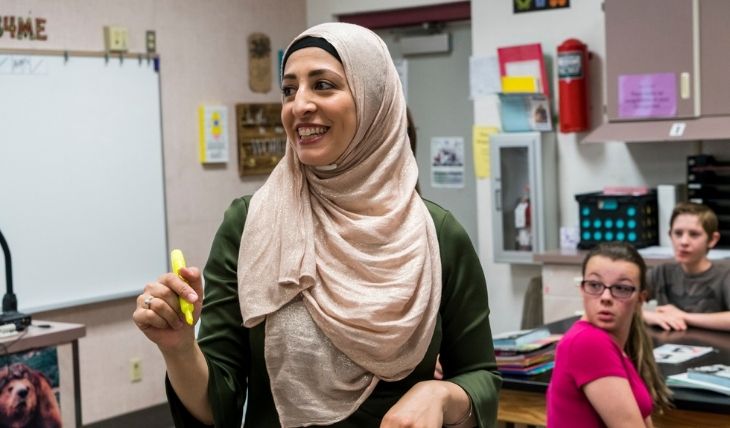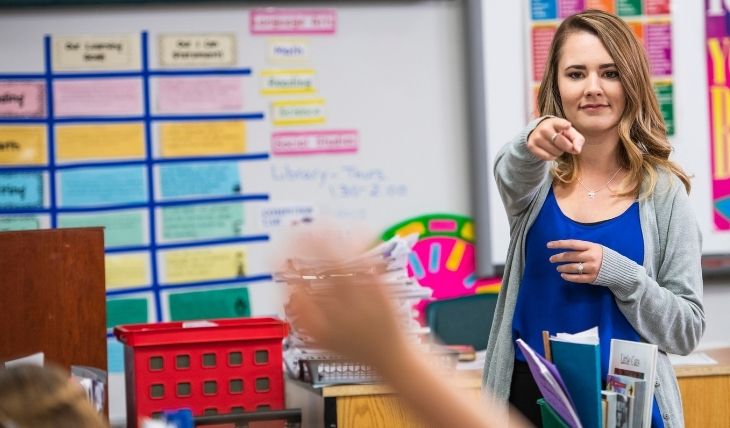Digital lesson design has the potential to transform instruction. Students can actively explore, engage, collaborate, and create, instead of being passive consumers. HyperDocs are a way to change classroom dynamics by empowering students to fully participate in the learning process.
“HyperDoc” is a term educators use to describe interactive Google Docs, Google Slides, or Google Drawings that transform instructional media and learning activities into a digital package. HyperDocs can be the ultimate change agent in the classroom when they are built with strong instructional design. They have the potential to shift instruction to be student-centric, which meets the needs of all learners, while also improving classroom workflow.
In Making HyperDocs, you will see how and why you should use HyperDocs in the classroom. By experiencing HyperDocs from the student perspective, you will grasp how you can make them work for your own students in any content area. Teachers will leave understanding how they can customize and create lessons and units that can be personalized to meet the needs of a broad range of learners. Most importantly, campers will learn how to setup a classroom and teach using a HyperDoc.
Participants will learn how to incorporate innovative tools, media, and design during HyperDoc Design School. In campfire sessions, participants will have the opportunity to personalize their experience and dive into a variety of tools and strategies to plug into a HyperDoc for student comprehension, collaboration, and creation including the Google Apps for Education Suite and various media making and formative assessment EdTech tools. Additionally, you will be introduced to other creative uses for HyperDocs, including for novel studies and interactive notebooks.
Strand members will dive into an online community of HyperDoc creators—a community that freely shares their documents for others to copy and modify. Learners will see that making a HyperDoc taps into their true creative side, as they design worthwhile experiences that students will love.
Note: Making HyperDocs is appropriate for teachers who work with students in second grade and higher.
5 Objectives
- Define “HyperDoc” and explain the theory and pedagogy behind digital lesson design.
- Explore HyperDoc examples and different packaging options. Discover templates, evaluate solid lesson design, and begin creating.
- Curate and package visually engaging content using Google apps. Embed digital and non-digital tools that allow for collaboration and creation. Examine classroom procedures, workflows, and instructional strategies and understand various ways to teach using a HyperDoc effectively.
- Learn to elevate the design and delivery of HyperDocs by reflecting on the 4Cs and SAMR to ensure that HyperDocs are transforming instruction and meeting the needs of all learners.
- Learn to share HyperDocs with the Teachers Give Teachers community, and find others that will support and collaborate alongside you.
Chrome, Search, Google Drive, Google Classroom, Gmail, Docs, Sheets, Forms, Slides, Jamboard, Tasks, Keep, Sites, Google Earth, Calendar, and YouTube. In addition to becoming proficient with the tools, you learn how to apply them in the classroom with practical and creative ideas that can give your teaching a boost.
Each day of Get Google Certified features practical topics that prepare you for the Google Certified Educator Level 1 exam. More importantly, the topics feature real life applications based on facilitators’ and participants’ classroom examples and resources from a variety of grade levels and subject areas. Topics include, but are certainly not limited to, creating an efficient workflow for you and your students, captivating your class with video, effective slide design, and productivity solutions for managing your files, emails, and daily events.
You have the option of taking the performance-based Google Certified Educator Level 1 exam during camp. The exam is 180 minutes and requires you to pay $10 by credit card. If you pass the exam, you get a digital badge, certificate, and proof that you understand and can apply the fundamentals of Google Workspace for Education tools. Even if you choose not to take the certification test, you’ll leave with the fundamental knowledge and skills to integrate Google’s tools into your practice.
5 Objectives:
- Explore ways to facilitate and inspire learning and creativity through effective slide design.
- Identify best practices for YouTube in the classroom.
- Determine effective methods of collecting and using data.
- Utilize important features of Google Drive and Google Classroom to help keep you and your students organized.
- Learn all the ins and outs of Google’s productivity tools so you can work smarter and not harder.
5 Objectives
- Explore tools that facilitate and inspire student learning.
- Learn how to edit and create content that will entertain and inform students.
- Apply effective techniques for gathering and using student data from online tools.
- Apply tips and tricks to make sure your students easily connect what they’re learning to the real-world.
- Leave with a toolbox of lessons that can be implemented in your next lesson!
Everyone loves games! Games and challenges engage students in learning in so many ways. In Gamify Learning we will define what it means to add elements of gameplay in the classroom to increase engagement. During this strand participants will learn simple ways to embed problem solving, differentiation, and competition into daily lessons. Many student-centered activities will be introduced to help students master content and learn social skills as well. Through teamwork and engaging content student motivation will rise. Participants will transform traditional lessons into enhanced learning experiences where students are provided choice and invited to explore and practice content in novel and meaningful ways.
Note: Gamify Learning is appropriate for teachers who work with students in third grade and higher.
5 Objectives
- Experience gamification firsthand and learn about the many benefits it has for student-centered learning.
- Explore resources appropriate for gamification and identify ones that are compatible with your grade level/content area tier 1 instruction.
- Apply effective techniques for targeted gamification and understand the value of gamification in student engagement.
- Create experiences for students that are standards-based and fun.
- Collect a treasure trove of resources to use when creating gamification in your classroom.
Online media has become a part of our everyday lives. Teachers can engage their students, relay important information, display and promote learning, and much more, by creating media content. Video has become the go-to way students and adults learn today. Instructional how-to videos are a large segment of YouTube content and can teach viewers how to do anything, be it changing a car tire or repairing the cooling system of a commercial airliner. In Making Media, participants will become the producer, director, and editor, as they learn to create engaging videos for their students. The goal is to have students create their own content to demonstrate understanding.
Participants will learn about the rules of photography and videography. They will put their knowledge to use as they create several different types of media projects that will be shared within the strand class and the entire group at Camp Plug and Play. Plan to grasp and implement strategies like the rule of thirds, shot framing, focus, patterns, depth, storyboards, and more.
Participants will also explore photo editing on mobile devices for perfecting the quick shots they take with phones and tablets. Participants will choose to focus on iMovie for iOS and MacBooks or dive into the YouTube Video Editor for Chromebooks.
5 Objectives:
- Learn basic and advanced features of digital photography and videography.
- Edit and create photos and videos, to entertain, inform, educate, and advocate to an authentic audience.
- Engage in effective photography and filming techniques on mobile devices and video equipment.
- Utilize a variety of apps and copyright friendly resources to create and enhance digital media.
- Apply mobile media creation skills in an academic and content-based context.




